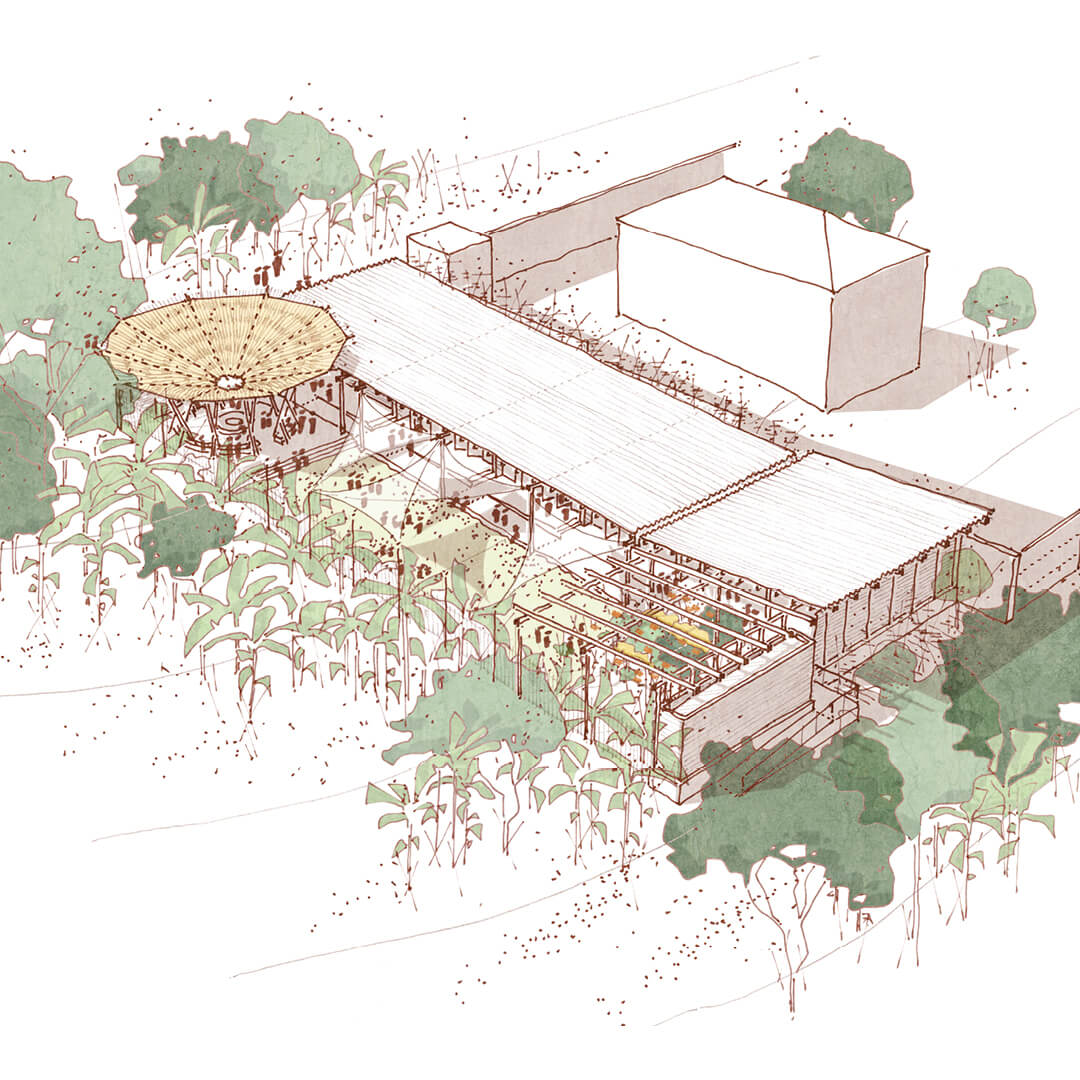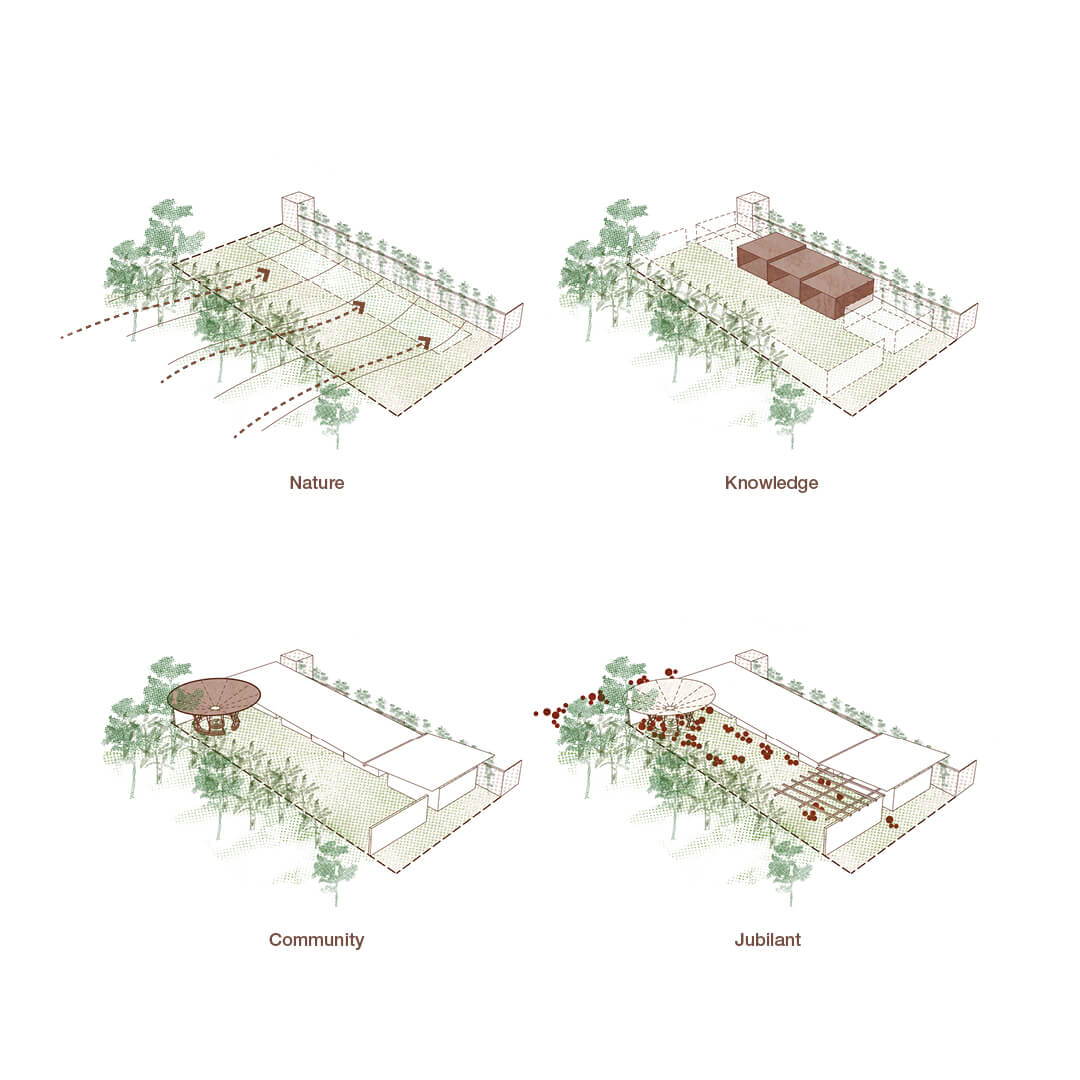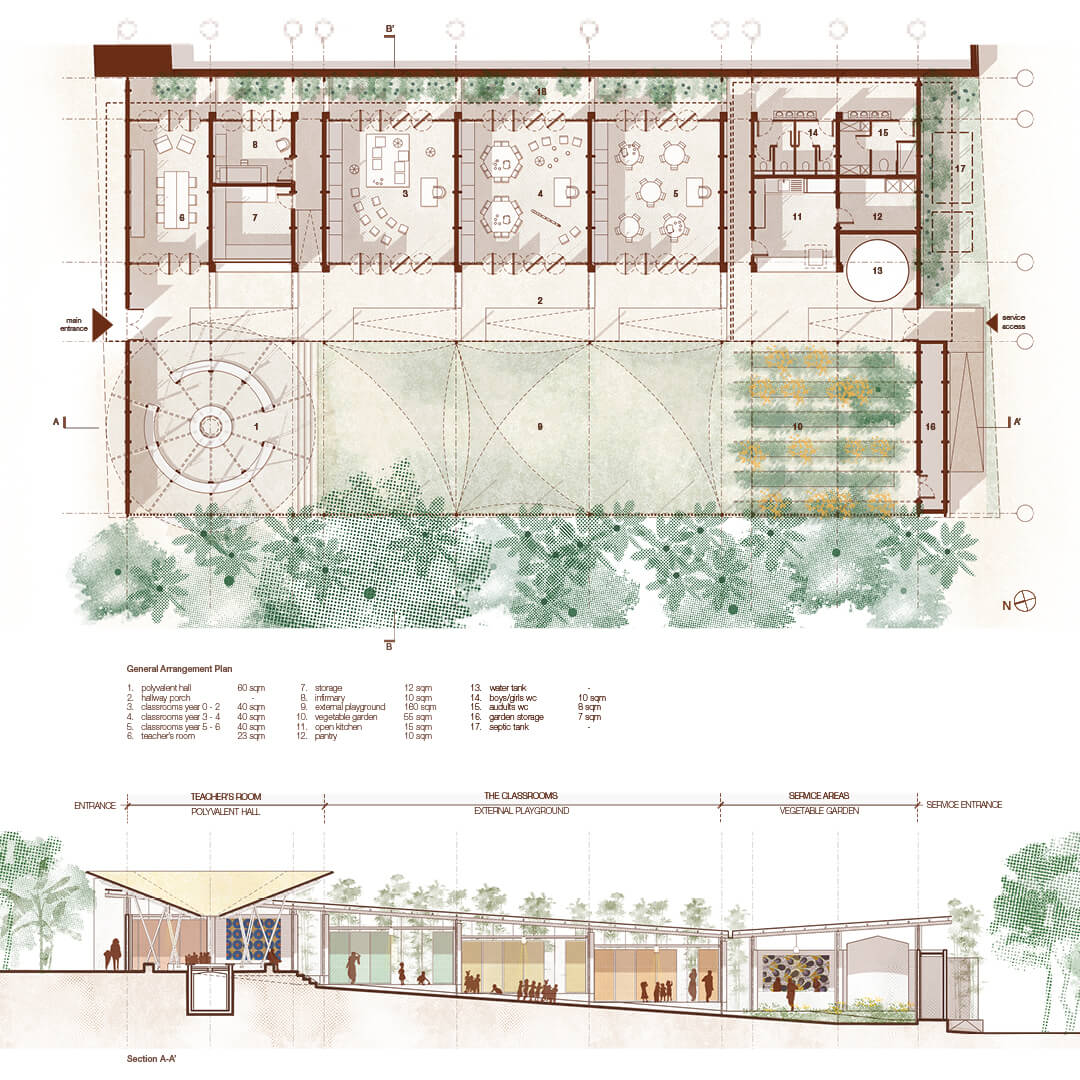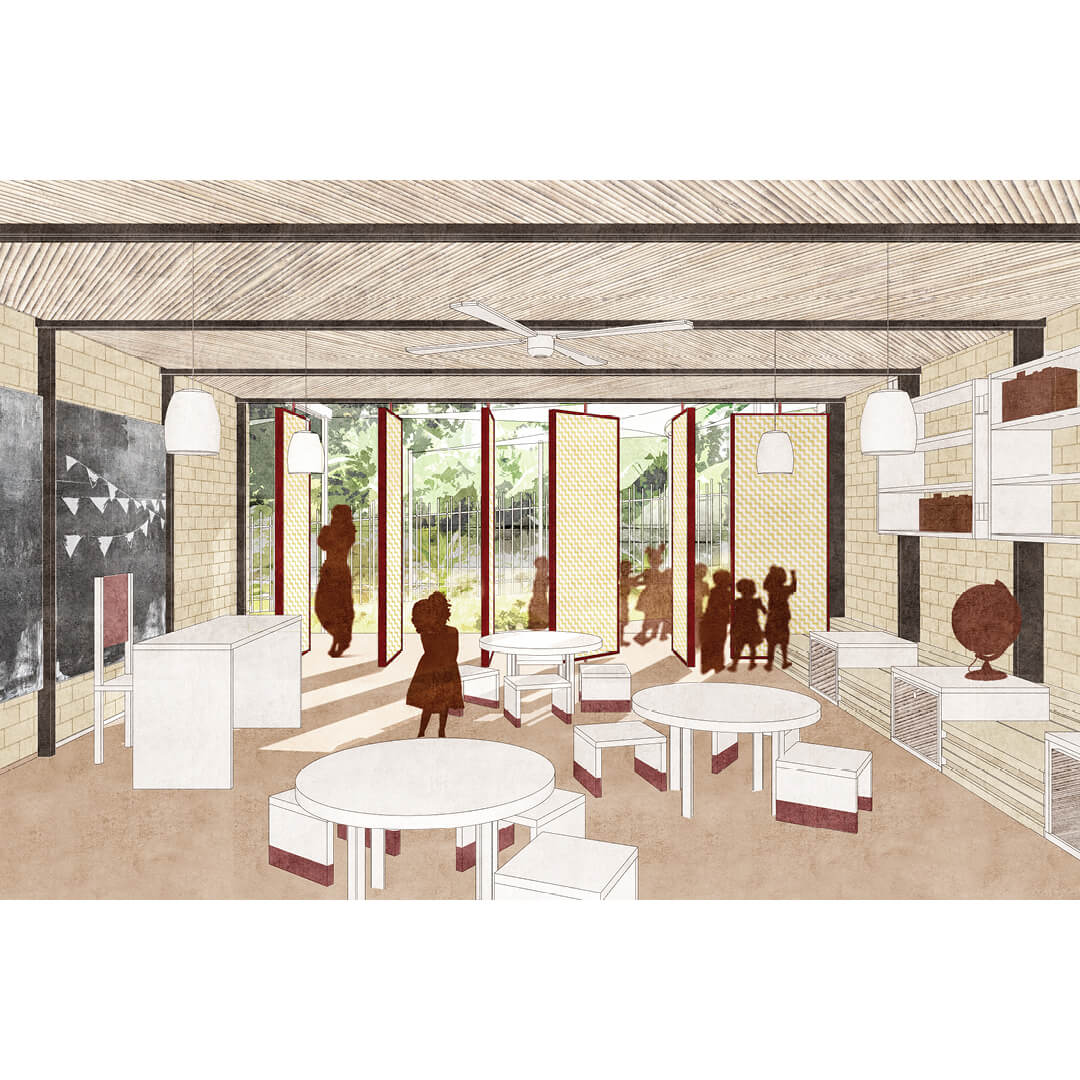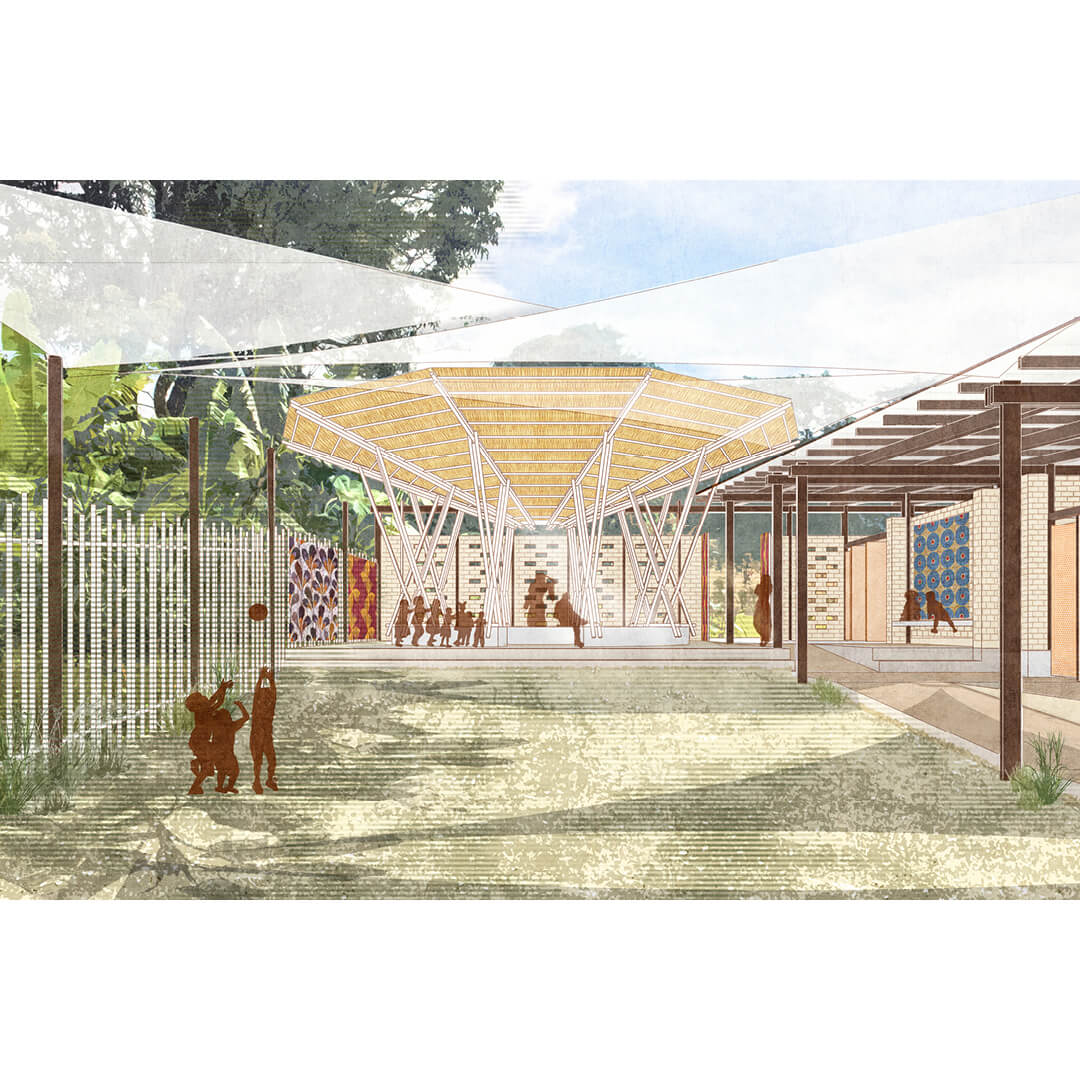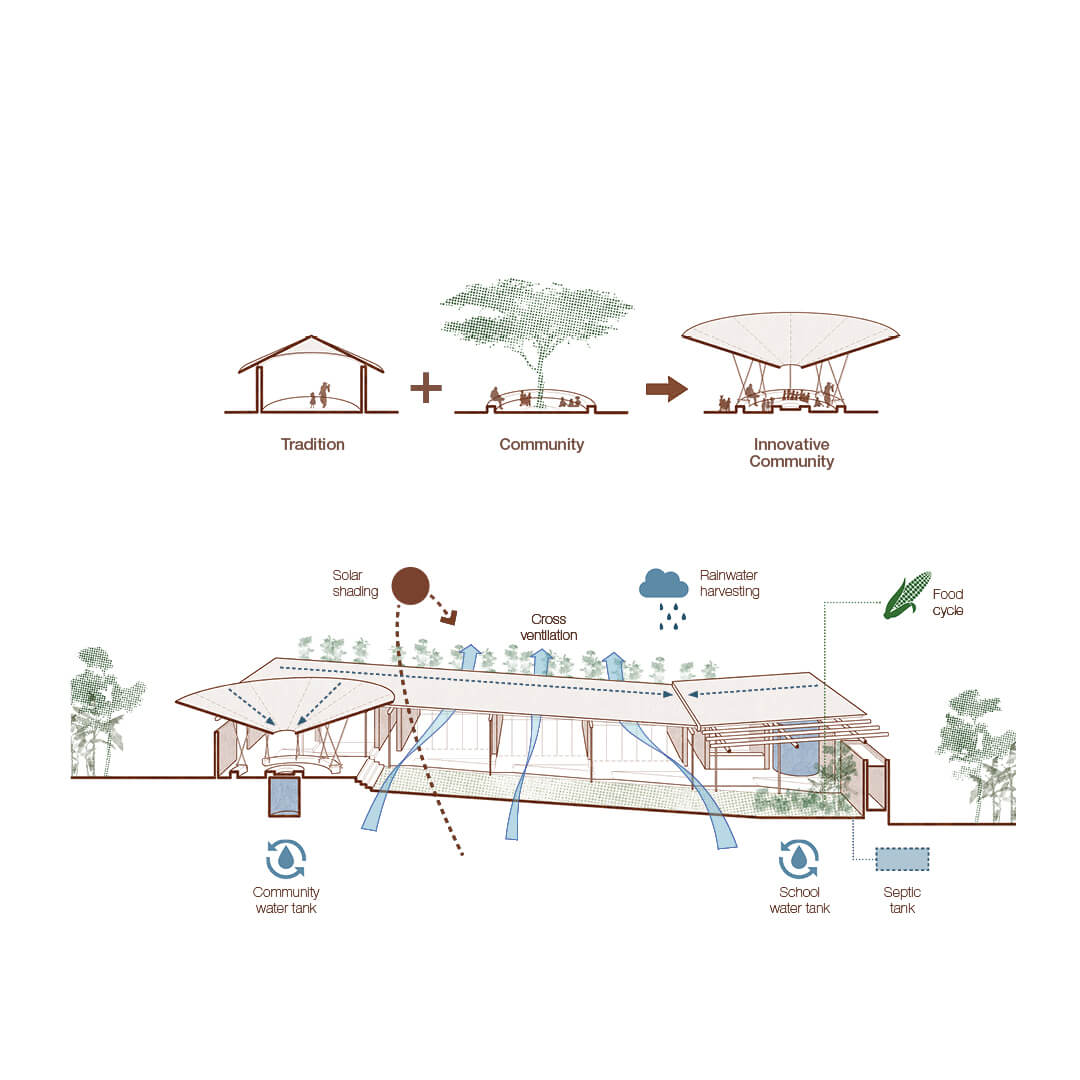SP architecture workshop
We propose a new school model based on an holistic approach, to create the opportunity for children to develop skills and confidence, living in a sustainable environment. We envision a protected and safe space to call home.
Jubilant Tree is a project for a new primary school for the children of the Jubilant orphanage. The project site is located in the Uru Kusini Moshi district, one of the seven districts of the Kilimanjaro Region of Tanzania, 6 km away from the city centre of Moshi. Our aim is to build a community, creating the opportunity for vulnerable children to belong to a group, promoting social integration and sharing life values. We promote a new human experience where education is the catalyst for success.
Spatial Layout
We propose a contextual and organic response to the site. The project follows the existing topography through a sequence of gentle slopes. It embraces the nature and blurs the boundary between the inside and outside spaces. A linear, simple and functional layout connects classrooms and complementary spaces through a singular path and in a spatial organization free of hierarchy. A generous hallway porch becomes the extent of each room. Fully openable doors create the interaction with the outside space, opening up towards the adjacent playground with breathtaking views over nature. The entrance is characterized by a perforated wall that gives glimpses of movement and activity inviting access to the school. The teacher’s room is located next to it and acts as a protective element, whilst the vegetable garden, kitchen and service areas are located at the lowest point of the site where the rainwater is collected. A polyvalent hall serves the school and the wider community, offering the opportunity to create not only a building for education but a space that can accommodate and stimulate social activities. The clearly visible and strong architectural feature, inspired by the canopy of a tree, acts as a beacon of light for the local community and symbolises knowledge. During the day, children can join activities in an outdoor room and during the evening hours, it becomes a source of illumination, offering a safe space to organize evening classes for adults and events. Tradition and community blend into an innovative and sustainable society.
Sustainable design
We propose a design based on passive principles, taking advantage of the life cycles of the building materials, uses and natural resources. The intent is to achieve an affordable and easy to build project, accessible to everyone. The locally available earth is promoted as main building material which honestly expresses itself as a feature within the architecture.
Compressed earth interlocking bricks form the primary partition walls. This beautiful and sustainable building technique allows for a fast construction on site and provides thermal mass to help control the internal temperature. The roof’s generous overhang protects from any weather condition. Its entire surface is used to collect the rainwater that flows towards a water tank strategically located adjacent to the service areas. A continuous planted buffer zone has been designed in the space between the linear building and the neighbour to maximize the contact with nature and stimulate the air flow within each room. A vegetable garden emphasizes the importance of nature. It provides a source of fresh food for the school meals but it is also an opportunity for children to learn about the growing processes and food cycles.
Structural Layout
The structural elements are simple and modular. Beams and columns built in local pine wood are anchored to the brick walls to provide additional lateral stability. This framework supports a metal deck which sits above a suspended ceiling to form a ventilation plenum and help release hot air from the interiors. The polyvalent hall canopy is proposed to be built in a bamboo frame and a traditional thatched roof, using local construction techniques in a simple, yet innovative architectural expression. Its inverted pitched roof is used as a compluvium to collect the rainwater that could be shared with the community. We would like to engage an educational process during construction. The aim is to involve local craftsmanship and end-users to stimulate local economies and to share a construction method that everyone can learn and re-propose on future developments. The challenge of limited resources becomes an opportunity to create an innovative and harmonious design.
Authors: SP architecture workshop
Website: www.schinaprimavera.com
Location: Moshi, Tanzania.
Year: 2021
Competition: Earth Architecture Competition.
Prize: First prize.
